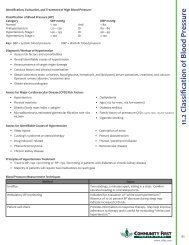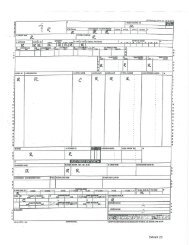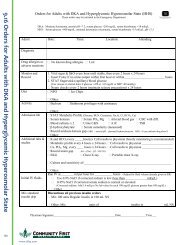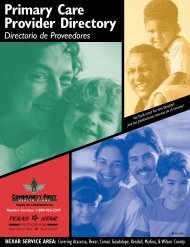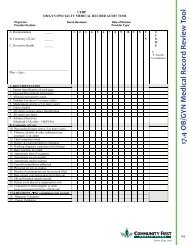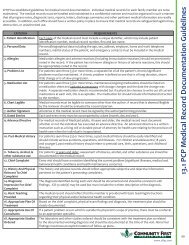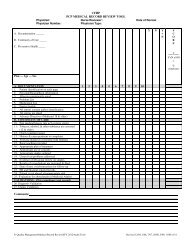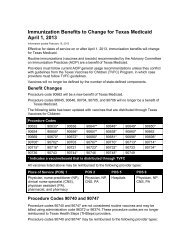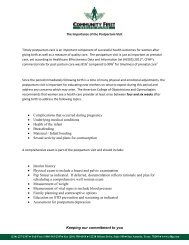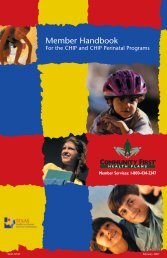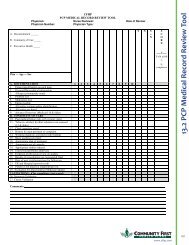Full Clinical Guidelines - Community First Health Plans.
Full Clinical Guidelines - Community First Health Plans.
Full Clinical Guidelines - Community First Health Plans.
Create successful ePaper yourself
Turn your PDF publications into a flip-book with our unique Google optimized e-Paper software.
Considerations for Prescribing Physical Activity for<br />
Type 2 Diabetes Prevention and Treatment<br />
Significant health benefits can be obtained by including an accumulated 30 minutes of<br />
moderate physical activity on most, if not all, days of the week.<br />
Regular physical activity lowers the risk of developing Type 2 diabetes.<br />
1996 Surgeon General’s Report on<br />
Physical Activity and <strong>Health</strong><br />
“Regular physical activity” includes all movements in everyday life, including work,<br />
recreation, exercise, and sporting activities.<br />
Low Intensity/Low Impact Activity - includes activities like walking,<br />
housework, light gardening, light yard work, and social dancing<br />
Moderate Intensity Activity - includes activities like brisk walking,<br />
vigorous gardening, slow cycling, aerobic dancing, doubles tennis,<br />
or hard work around the house.<br />
.<br />
Precautions for Exercise Prescription<br />
Retinopathy<br />
Patients with proliferative diabetic retinopathy have abnormal hemodynamic responses of the cerebral and<br />
ophthalmic circulation both at rest and with exercise. Vigorous physical activity, especially isometric contractions,<br />
produces significant increases in blood pressure and can accelerate proliferative diabetic retinopathy with<br />
significant risk of retinal and vitreal hemorrhage and detachment. Low impact/low intensity physical activity<br />
recommended.<br />
Orthopedic Problems<br />
Neuropathy and peripheral vascular disease can predict unnoticed foot injury. Footwear that relieves forefoot<br />
plantar pressure by up to 50% has been shown to be effective in preventing the recurrence of foot ulcers when worn for more<br />
than 60% of the day (Peirce, N. 1999. British Journal of Sports Medicine)<br />
<strong>Guidelines</strong> for Exercise Prescription<br />
1. Appropriate attire for physical activity, i.e., footwear - socks, shoes, insoles/orthotics.<br />
2. Do not exercise at peak hypoglycemic times.<br />
3. Monitor blood glucose before and during exercise if symptoms of hypoglycemia occur with exercise.<br />
4. Wear a form of personal identification or medical alert.<br />
5. Carry fast acting carbohydrate, i.e., sucrose and glucose products.<br />
6. Examine feet after exercise.<br />
7. Maintain adequate hydration.<br />
54 H EALTH PLANS<br />
www.cfhp.com



